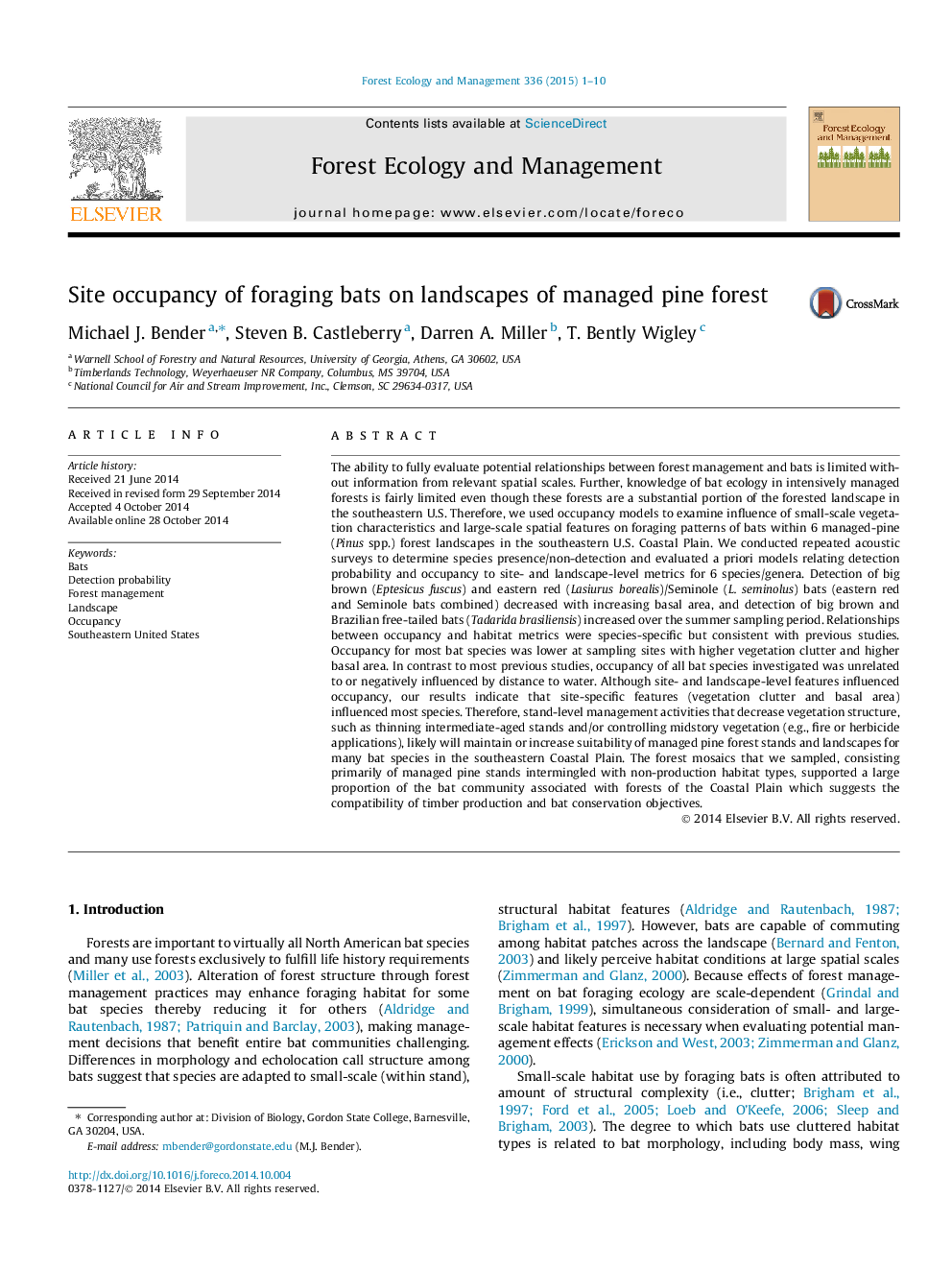| کد مقاله | کد نشریه | سال انتشار | مقاله انگلیسی | نسخه تمام متن |
|---|---|---|---|---|
| 86411 | 159187 | 2015 | 10 صفحه PDF | دانلود رایگان |
• We model small and large-scale factors on bat occupancy in managed forests.
• Managed forest landscapes support most bats associated with Coastal Plain forests.
• Detection probabilities declined with increasing vegetation clutter.
• Occupancy was lower at sites with higher vegetation clutter and basal area.
• Management activities that reduce vegetation structure likely improve foraging.
The ability to fully evaluate potential relationships between forest management and bats is limited without information from relevant spatial scales. Further, knowledge of bat ecology in intensively managed forests is fairly limited even though these forests are a substantial portion of the forested landscape in the southeastern U.S. Therefore, we used occupancy models to examine influence of small-scale vegetation characteristics and large-scale spatial features on foraging patterns of bats within 6 managed-pine (Pinus spp.) forest landscapes in the southeastern U.S. Coastal Plain. We conducted repeated acoustic surveys to determine species presence/non-detection and evaluated a priori models relating detection probability and occupancy to site- and landscape-level metrics for 6 species/genera. Detection of big brown (Eptesicus fuscus) and eastern red (Lasiurus borealis)/Seminole (L. seminolus) bats (eastern red and Seminole bats combined) decreased with increasing basal area, and detection of big brown and Brazilian free-tailed bats (Tadarida brasiliensis) increased over the summer sampling period. Relationships between occupancy and habitat metrics were species-specific but consistent with previous studies. Occupancy for most bat species was lower at sampling sites with higher vegetation clutter and higher basal area. In contrast to most previous studies, occupancy of all bat species investigated was unrelated to or negatively influenced by distance to water. Although site- and landscape-level features influenced occupancy, our results indicate that site-specific features (vegetation clutter and basal area) influenced most species. Therefore, stand-level management activities that decrease vegetation structure, such as thinning intermediate-aged stands and/or controlling midstory vegetation (e.g., fire or herbicide applications), likely will maintain or increase suitability of managed pine forest stands and landscapes for many bat species in the southeastern Coastal Plain. The forest mosaics that we sampled, consisting primarily of managed pine stands intermingled with non-production habitat types, supported a large proportion of the bat community associated with forests of the Coastal Plain which suggests the compatibility of timber production and bat conservation objectives.
Journal: Forest Ecology and Management - Volume 336, 15 January 2015, Pages 1–10
